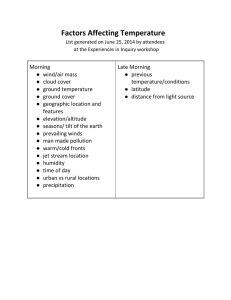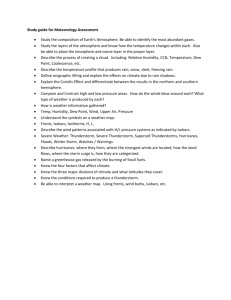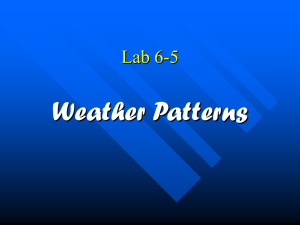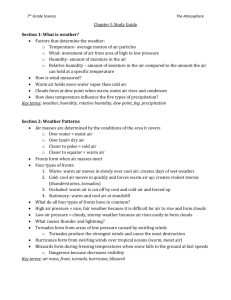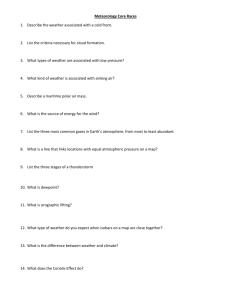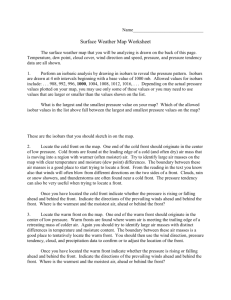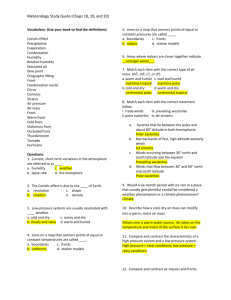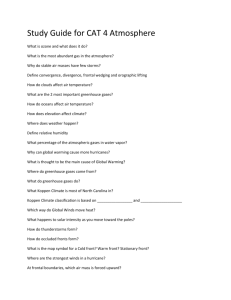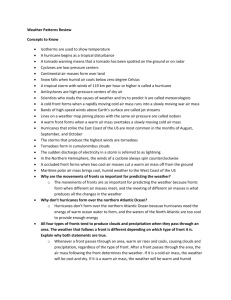Study Guide - Meteorology
advertisement
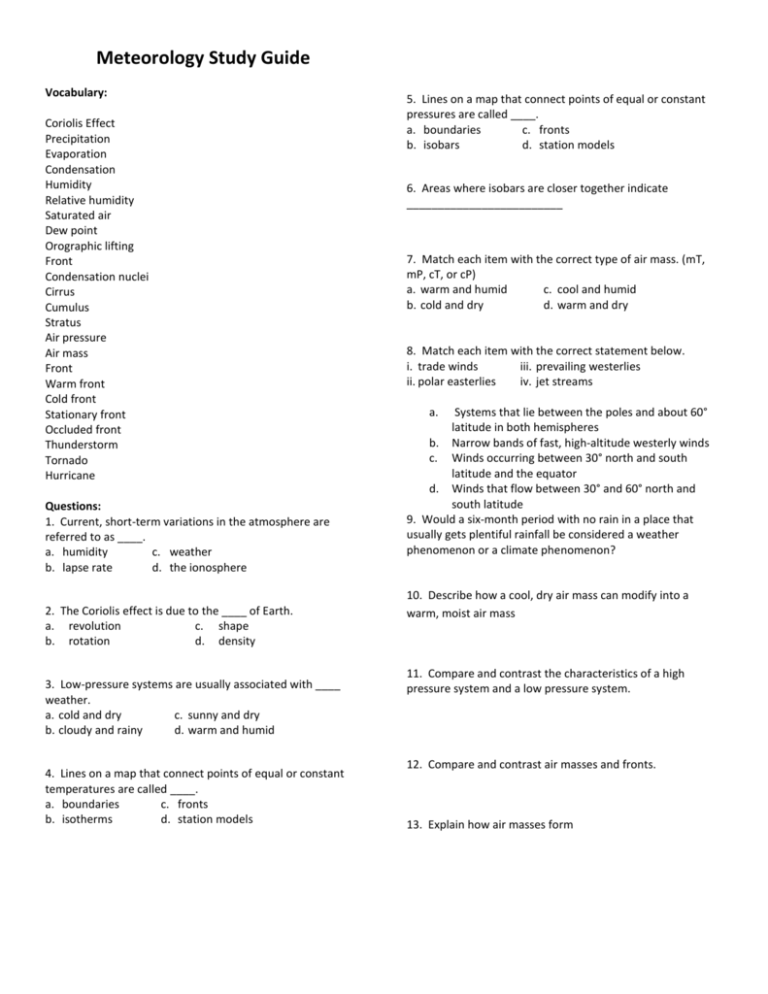
Meteorology Study Guide Vocabulary: Coriolis Effect Precipitation Evaporation Condensation Humidity Relative humidity Saturated air Dew point Orographic lifting Front Condensation nuclei Cirrus Cumulus Stratus Air pressure Air mass Front Warm front Cold front Stationary front Occluded front Thunderstorm Tornado Hurricane Questions: 1. Current, short-term variations in the atmosphere are referred to as ____. a. humidity c. weather b. lapse rate d. the ionosphere 2. The Coriolis effect is due to the ____ of Earth. a. revolution c. shape b. rotation d. density 3. Low-pressure systems are usually associated with ____ weather. a. cold and dry c. sunny and dry b. cloudy and rainy d. warm and humid 4. Lines on a map that connect points of equal or constant temperatures are called ____. a. boundaries c. fronts b. isotherms d. station models 5. Lines on a map that connect points of equal or constant pressures are called ____. a. boundaries c. fronts b. isobars d. station models 6. Areas where isobars are closer together indicate _________________________ 7. Match each item with the correct type of air mass. (mT, mP, cT, or cP) a. warm and humid c. cool and humid b. cold and dry d. warm and dry 8. Match each item with the correct statement below. i. trade winds iii. prevailing westerlies ii. polar easterlies iv. jet streams a. Systems that lie between the poles and about 60° latitude in both hemispheres b. Narrow bands of fast, high-altitude westerly winds c. Winds occurring between 30° north and south latitude and the equator d. Winds that flow between 30° and 60° north and south latitude 9. Would a six-month period with no rain in a place that usually gets plentiful rainfall be considered a weather phenomenon or a climate phenomenon? 10. Describe how a cool, dry air mass can modify into a warm, moist air mass 11. Compare and contrast the characteristics of a high pressure system and a low pressure system. 12. Compare and contrast air masses and fronts. 13. Explain how air masses form 14. Explain how clouds form. Reminders: 15. Identify the four types of fronts and the weather conditions associated with each one. 16. Compare and contrast a continental polar air mass and a maritime tropical air mass. Be sure to review figure 3 on page 560, pictures of the fronts, figure 3 on page 534, and figure 12 on page 518 Review the processes that lift air Know which direction the Coriolis Effect deflects in the N. and S. Hemispheres Review cloud types Be able to read a weather map (Weather Model class activity) 17. You examine two weather maps of your area for two different days. One map shows isobars that are closely spaced; the other shows isobars that are far apart. Predict the difference in weather conditions for those days. 18. What are the 3 stages of a thunderstorm? High Pressure 19. Describe the formation of a tornado and hurricane. 20. Explain the relationship between temperature and pressure. (Think about the cloud lab!) 21. Rising air is associated with…. 22. Sinking air is associated with… Low Pressure
